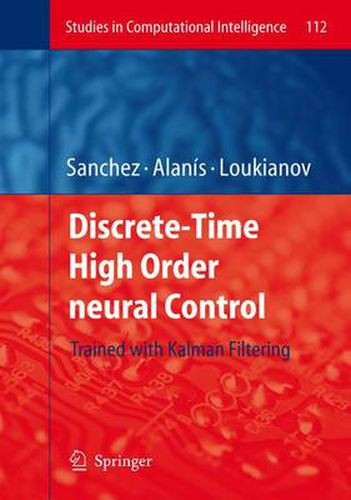Readings Newsletter
Become a Readings Member to make your shopping experience even easier.
Sign in or sign up for free!
You’re not far away from qualifying for FREE standard shipping within Australia
You’ve qualified for FREE standard shipping within Australia
The cart is loading…






This title is printed to order. This book may have been self-published. If so, we cannot guarantee the quality of the content. In the main most books will have gone through the editing process however some may not. We therefore suggest that you be aware of this before ordering this book. If in doubt check either the author or publisher’s details as we are unable to accept any returns unless they are faulty. Please contact us if you have any questions.
Neural networks have become a well-established methodology as exempli?ed by their applications to identi?cation and control of general nonlinear and complex systems; the use of high order neural networks for modeling and learning has recently increased. Usingneuralnetworks,controlalgorithmscanbedevelopedtoberobustto uncertainties and modeling errors. The most used NN structures are Feedf- ward networks and Recurrent networks. The latter type o?ers a better suited tool to model and control of nonlinear systems. There exist di?erent training algorithms for neural networks, which, h- ever, normally encounter some technical problems such as local minima, slow learning, and high sensitivity to initial conditions, among others. As a viable alternative, new training algorithms, for example, those based on Kalman ?ltering, have been proposed. There already exists publications about trajectory tracking using neural networks; however, most of those works were developed for continuous-time systems. On the other hand, while extensive literature is available for linear discrete-timecontrolsystem,nonlineardiscrete-timecontroldesigntechniques have not been discussed to the same degree. Besides, discrete-time neural networks are better ?tted for real-time implementations.
$9.00 standard shipping within Australia
FREE standard shipping within Australia for orders over $100.00
Express & International shipping calculated at checkout
This title is printed to order. This book may have been self-published. If so, we cannot guarantee the quality of the content. In the main most books will have gone through the editing process however some may not. We therefore suggest that you be aware of this before ordering this book. If in doubt check either the author or publisher’s details as we are unable to accept any returns unless they are faulty. Please contact us if you have any questions.
Neural networks have become a well-established methodology as exempli?ed by their applications to identi?cation and control of general nonlinear and complex systems; the use of high order neural networks for modeling and learning has recently increased. Usingneuralnetworks,controlalgorithmscanbedevelopedtoberobustto uncertainties and modeling errors. The most used NN structures are Feedf- ward networks and Recurrent networks. The latter type o?ers a better suited tool to model and control of nonlinear systems. There exist di?erent training algorithms for neural networks, which, h- ever, normally encounter some technical problems such as local minima, slow learning, and high sensitivity to initial conditions, among others. As a viable alternative, new training algorithms, for example, those based on Kalman ?ltering, have been proposed. There already exists publications about trajectory tracking using neural networks; however, most of those works were developed for continuous-time systems. On the other hand, while extensive literature is available for linear discrete-timecontrolsystem,nonlineardiscrete-timecontroldesigntechniques have not been discussed to the same degree. Besides, discrete-time neural networks are better ?tted for real-time implementations.